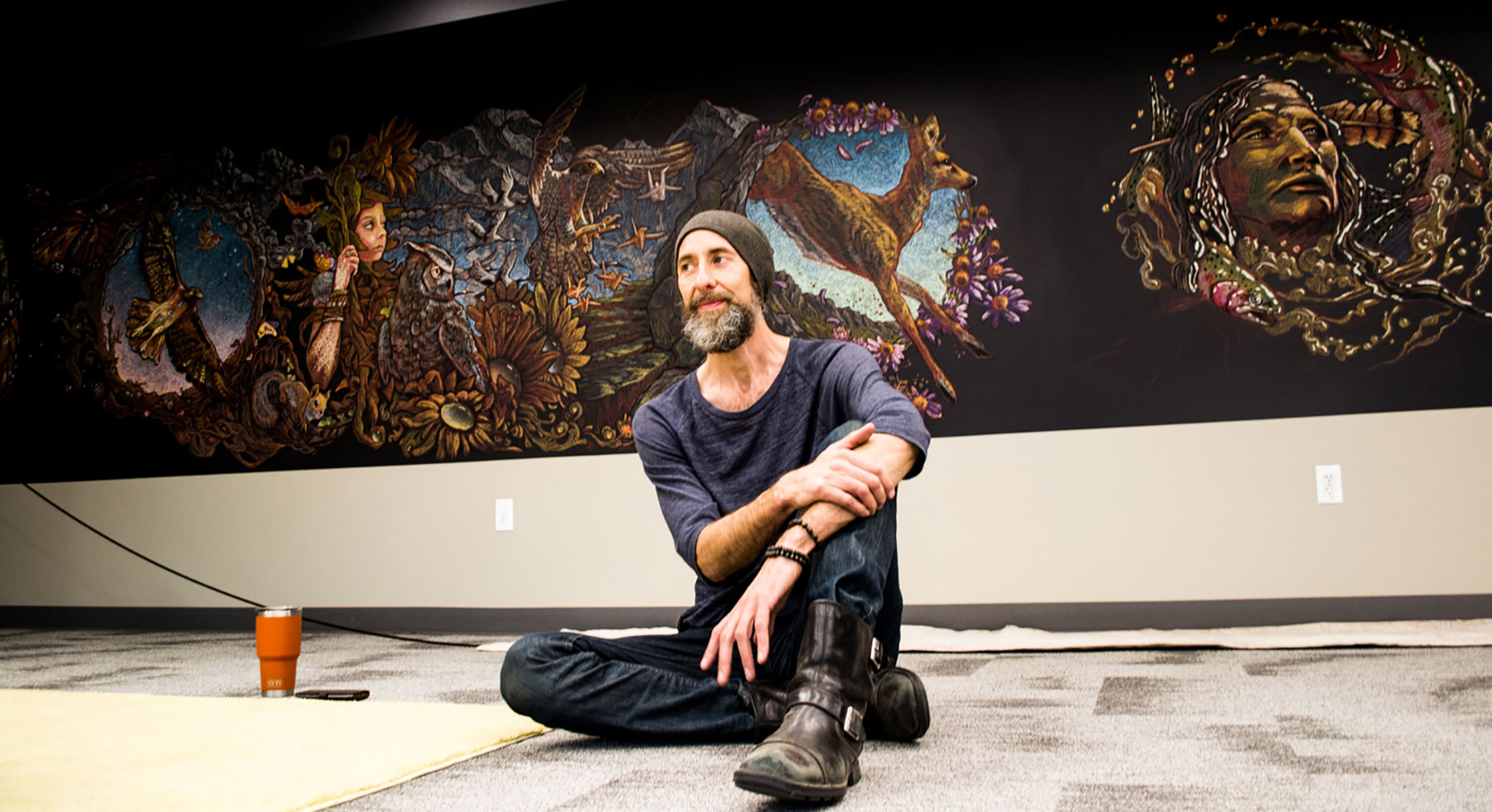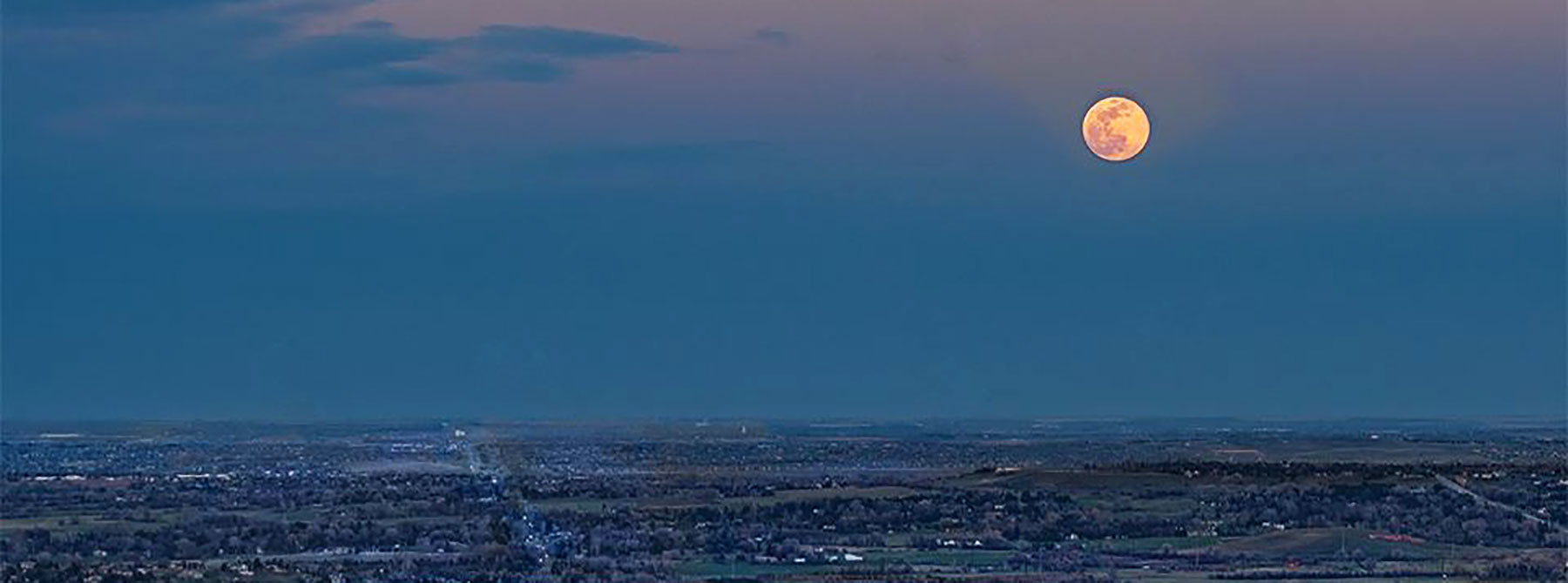Editor’s note: March was our art issue, but COVID-19, as it has done to many, changed that plan, and we shifted focus. However, art might be exactly what we need right now.
As local painter Bryce Widom and I sat on the Museum of Boulder’s basement floor late last week, a calmness settled. The museum had just shut its doors due to the virus and the closing party for Bryce’s museum show, originally scheduled for Sat., March 14, was indefinitely postponed.
Over the last month and a half, Bryce has brought a temporary chalk drawing to life across one of the museum’s basement walls, beginning at the top of the first-floor stairs.
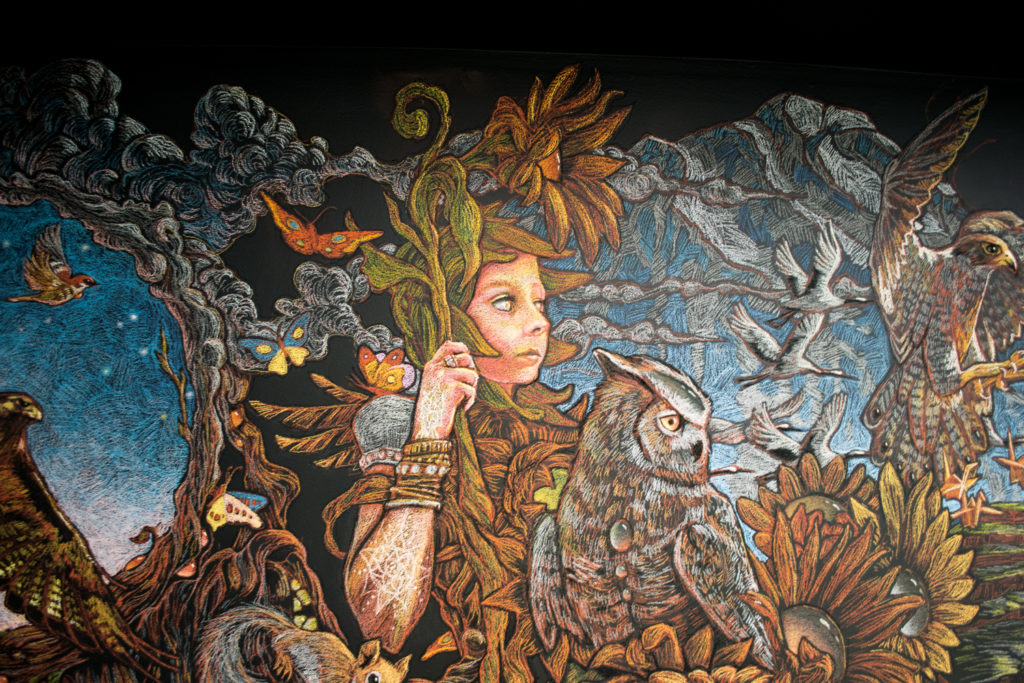
A chalk squiggle guides visitors from the first floor down two flights, undulating and expanding along the way into bubbles and blossoms, studies of original Arapahoe drawings and a tiny portrait before bursting full-color into Boulder nature scenes, wildlife and history stretching across the entire wall.
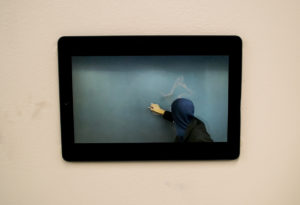
Cylindrical chalk spinners sit around the room, inviting patrons to draw on them, and tiny chalk-board easels stand about for kids to create their own art. An iPad on the wall documents Bryce’s entire process in time-lapse.
The vision behind the piece? To create something beautiful that publicly gets wiped away, like a Tibetan sand mandala.
Bryce had no idea what exactly he would put on the wall when he began or the sprawling life that would emerge over the weeks that followed. He only knew he wanted to begin with a completely black wall.
As part of the installation’s setup, the work space remained open to visitors, so they played a big part in Bryce’s creative process.
Process + acceptance
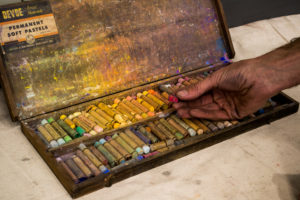
Bryce began his journey with the impermanence of chalk art as an employee at Boulder’s Mountain Sun Pub & Brewery. For over two decades, Bryce has created a great number of chalk artworks for the pubs
Often, patrons and friends would express shock at his plans for erasing his work at the museum. However, for Bryce, whose crippling perfectionism once stopped him from making any art at all, the erasing provides catharsis.
“Letting go is a part of nature,” Bryce says. “If we had eternal daylight and no night, our planet would be cooked. If we only had night, we’d freeze.”
While much of his art is representational, Bryce prefers working from his imagination. He begins his pieces from a nonthinking place. When the museum contacted Bryce for the collaboration, it trusted his vision.
The piece evolved into a deep exploration of Boulder’s traumatic early history: the 1864 Sand Creek Massacre, Chief Niwot, and Boulder’s native Arapahoes. The creating and erasing of the imagery represents a visceral way of alchemizing this history, accepting the reality of what happened with the intent of moving into a more compassionate and just future.
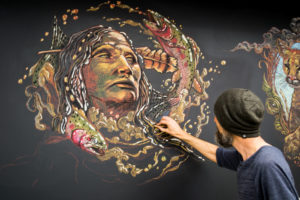
The art of letting go
In times of heightened fear and stress, it’s easy for us to contract. The unknown, and an unstable reality, disorients us.
Sometimes there’s nothing we can do — like with COVID-19 as it wreaks havoc on life as we know it — we lose contracts, monthly income, stability, routines, the companionship of our friends and neighbors.
Letting go creates space for us to fully embrace what’s next, and stands as one of art’s core functions.
The closing event, when Bryce will erase the piece, will occur when the museum opens. This remains up in the air, but we will keep you posted.
Header image: Bryce Widom in front of his work at the Museum of Boulder. Image: Tatyana Sharpton.

